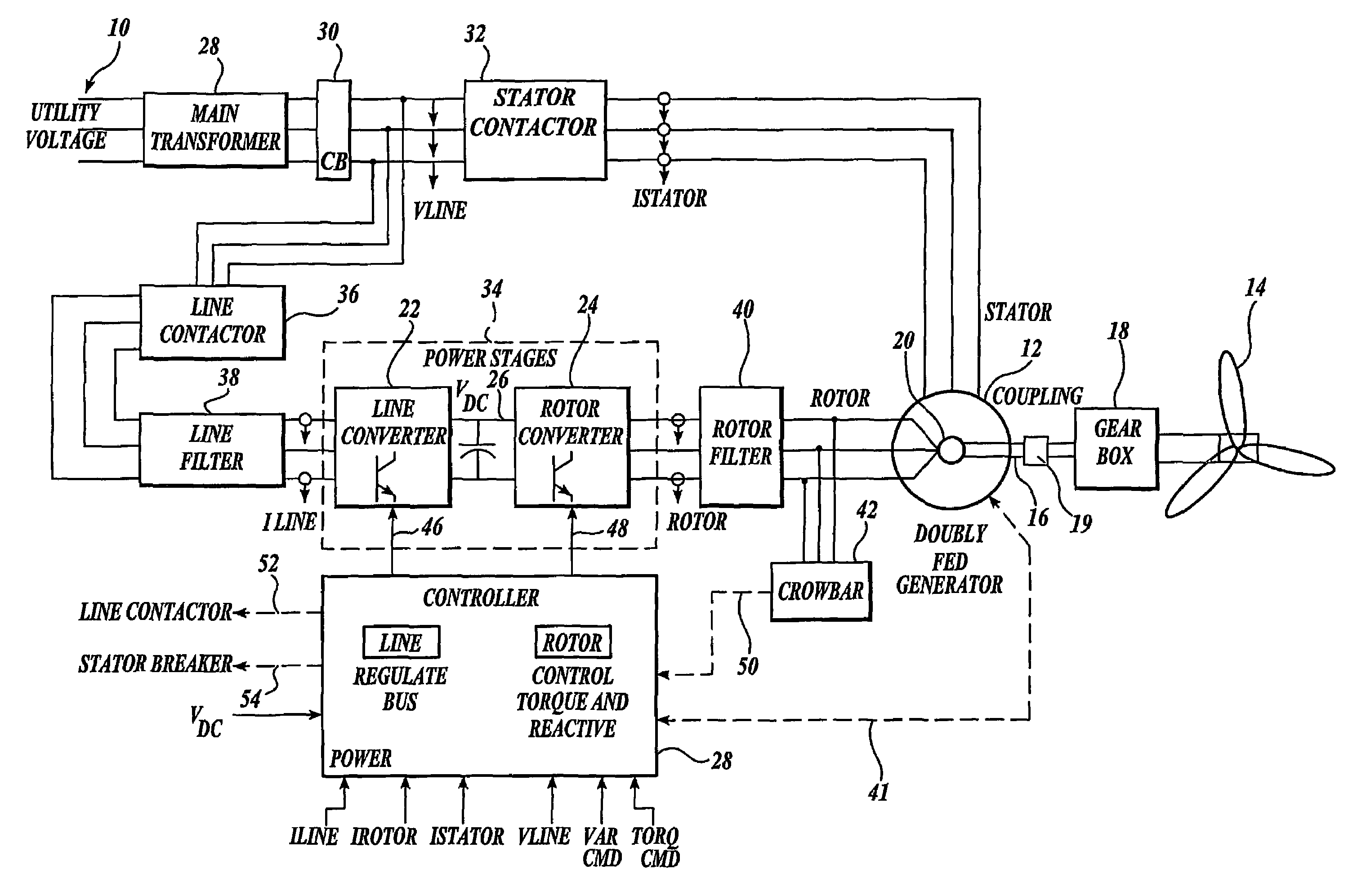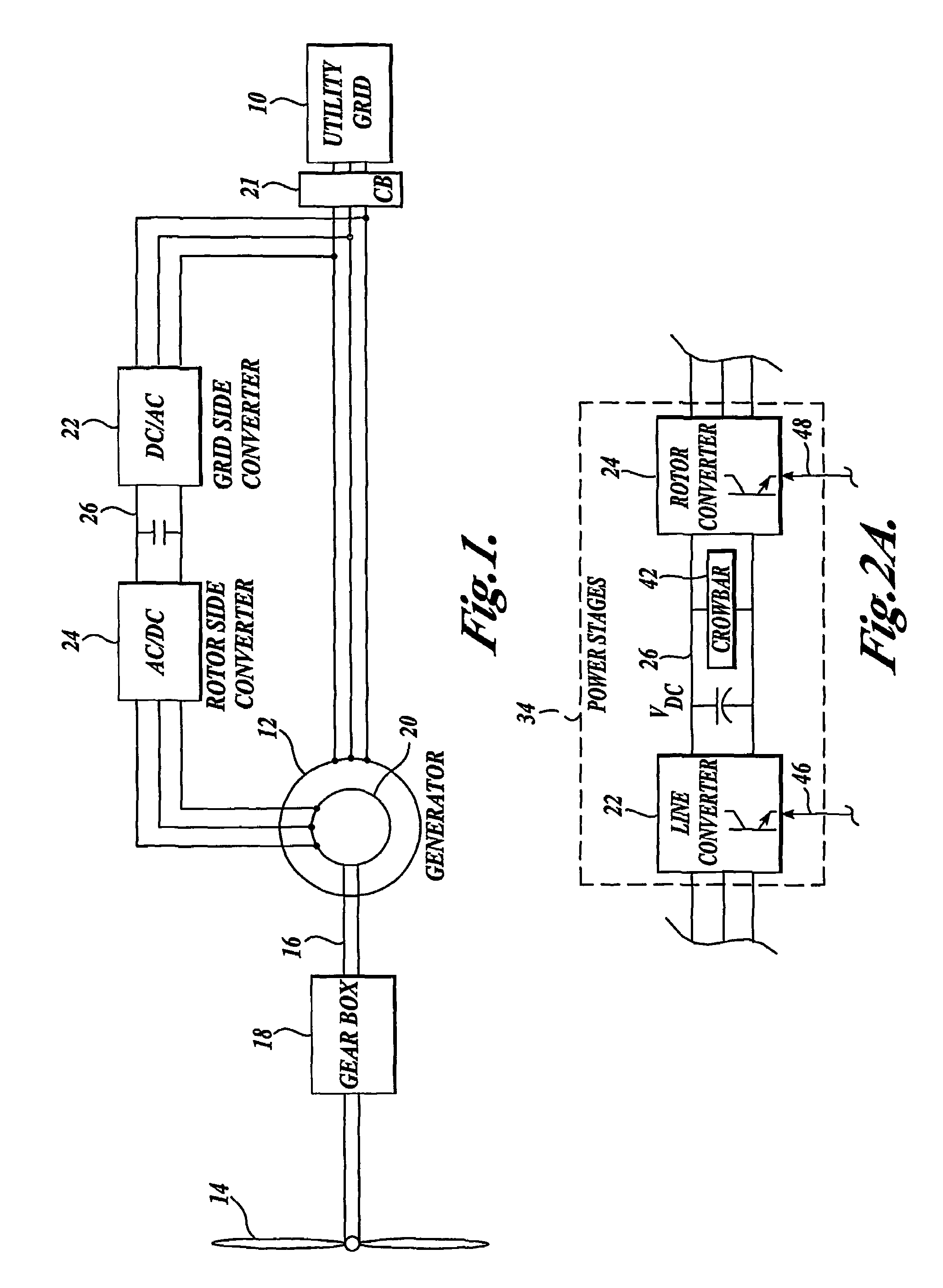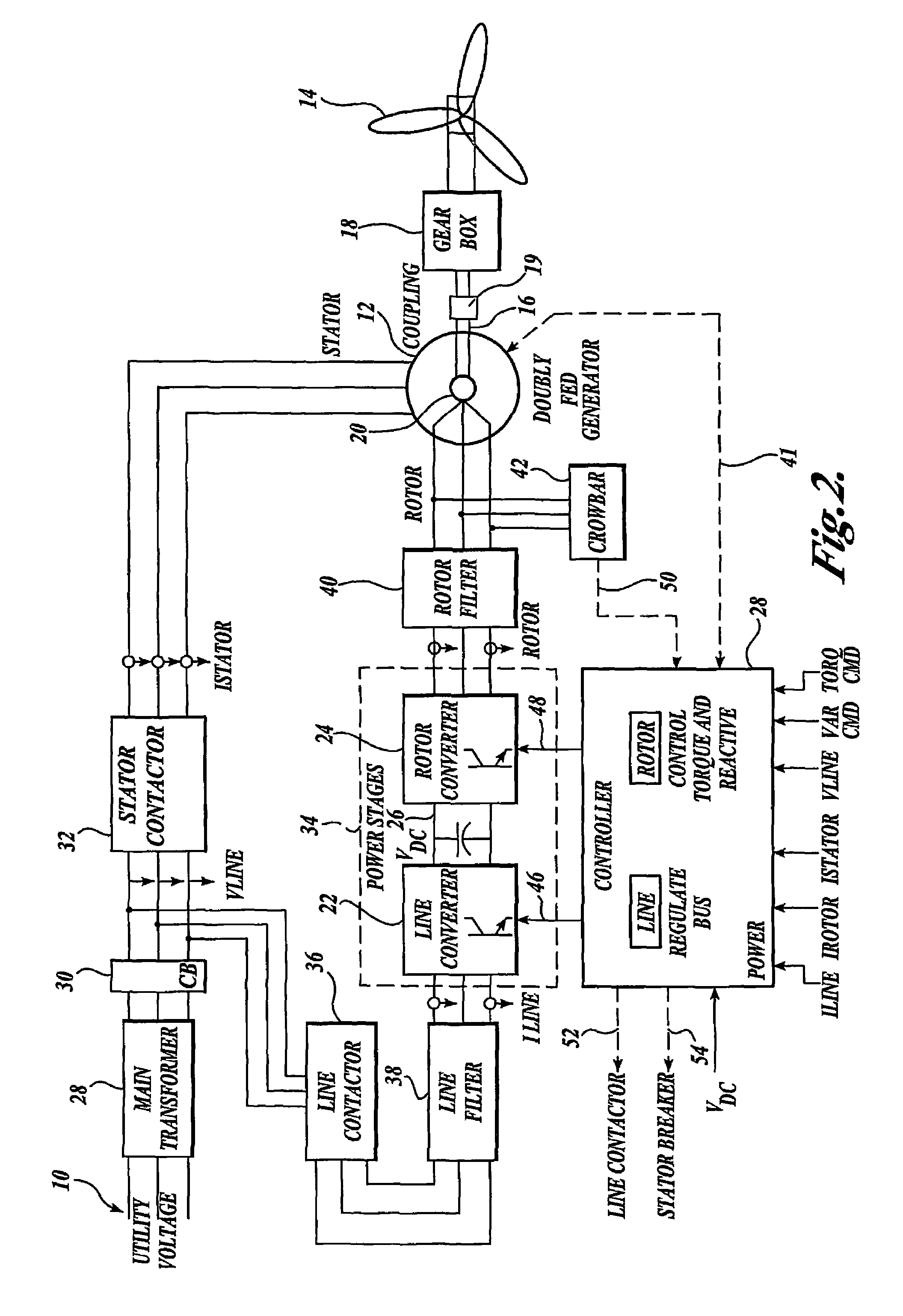Control system for doubly fed induction generator
a control system and induction generator technology, applied in the direction of electric generator control, dynamo-electric converter control, machines/engines, etc., can solve the problems of grid voltage variation and present problems, and achieve the effect of reducing the rotor curren
- Summary
- Abstract
- Description
- Claims
- Application Information
AI Technical Summary
Benefits of technology
Problems solved by technology
Method used
Image
Examples
Embodiment Construction
General Operation
[0025]A simplified diagram of a doubly fed induction generator system is shown in FIG. 1. A utility grid 10 energizes the windings of the generator stator 12 (represented as the outer circle). Typically the grid supplies three phase alternating current. Supplied line voltage can be designated as VLine or VL and supplied line current designated as ILine or IL. The three phase parameters can be designated as: VLab, VLbc, VLca for phase to phase voltages; ILa, ILb, ILc for phase currents. The stator voltage can be designated Vs, stator current Is, and three phase parameters: Vsab, Vsbc, Vsca for phase to phase voltages; Isa, Isb, Isc for phase currents.
[0026]At the rotor side, the wind-driven blade assembly 14 drives the rotor shaft 16, such as through a gear box 18. This generates the mechanical force to turn the DFIG rotor 20 (represented as the inner circle). The rotor electrical connections are through slip rings. Rotor voltage can be represented as Vr, and rotor c...
PUM
 Login to View More
Login to View More Abstract
Description
Claims
Application Information
 Login to View More
Login to View More - R&D
- Intellectual Property
- Life Sciences
- Materials
- Tech Scout
- Unparalleled Data Quality
- Higher Quality Content
- 60% Fewer Hallucinations
Browse by: Latest US Patents, China's latest patents, Technical Efficacy Thesaurus, Application Domain, Technology Topic, Popular Technical Reports.
© 2025 PatSnap. All rights reserved.Legal|Privacy policy|Modern Slavery Act Transparency Statement|Sitemap|About US| Contact US: help@patsnap.com



